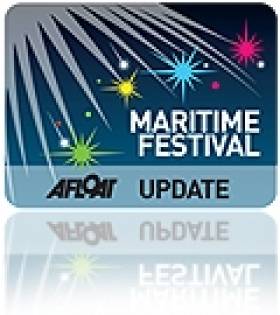Displaying items by tag: FlightFest
Classic Planes Debut At Bray Air Display This Summer
#Festivals - If you enjoyed last year's FlightFest on the River Liffey, mark Sunday 20 July on your calendars - as organisers have announced details of this year's Bray Air Display.
The Hunter, the Sabre, the Yaks and the Vampires are all set to make their Bray aerial debut at Ireland’s largest free air show, organised in association with Bray Summerfest and the Irish Aviation Authority.
The free family event attracted a record-breaking 85,000 spectators last year, with similar numbers expected again this summer.
Team Yakovlevs - or the Yaks, as they are affectionately known - are among those making their Bray debut, having entertained millions of people around the world with their precision formation flying.
Their Super 52 two-seater planes will be followed in close formation by three single seater Yak 50 planes.
The Vampires, piloted by Kenneth Aarkvisla and Per ‘Smiley’ Stromme, will be flying their jet fighters from the Second World War, capable of reaching top speeds of 548 miles per hour.
Meanwhile, pilot Mark Linney will be roaring over the skies of Bray in the Sabre, an American fighter jet best known for its high speeds and loud engines.
And the Hunter, flown by Jonathan Whaley, is a British-made fighter from the 1950s, renowned for its loud engines, manoeuvrability and breakneck speeds.
Display director Sé Pardy from Simtech Aviation said: “Once again, Ireland is attracting world-class pilots and aircraft to Bray for the country’s biggest free air show on 20 July.
"For this year’s programme, we’re introducing vintage aircraft, extreme formation flying and search and rescue demonstrations, bringing excitement, aerial acrobatics and thrills to the East Coast.
"We have several new acts making their debut, but we will also be welcoming crowd favourites back to Bray, with aerial action to entertain the whole family.”
Introduced in 1949, the famous MIG 15 was developed by the Soviet Union and was the only aircraft to face the Sabre in combat. This loud, vintage plane will also be making its first appearance at Bray.
The S-92 helicopter, operated by the Irish Coast Guard, will also be welcomed for the first time to Bray. Equipped for dedicated search and rescue (SAR) operations, it services Ireland’s offshore islands and provides rescue cover from Cork to Galway.
Other aircraft making their debut in July include the Stearman 75 and the Decathlon, a two-seater sports plane.
The Bray Air Display is just one of the highlights in the annual Bray Summerfest programme, which runs from 5 July to 14 August 14 subject to licence.
Further aircraft will be announced for the display over the coming weeks, and due to the large crowds expected on the day, spectators are strongly advised to use DART, Dublin Bus and other public transport services as parking restrictions will be in place.
For more on the day's events visit BrayAirDisplay.com.
Weather Won't Dampen FlightFest On River Liffey This Sunday
#FlightFest - Though the weather forecast isn't looking great for the day, organisers of FlightFest on the River Liffey say the full schedule is proceeding as planned for this Sunday 15 September.
The once-in-a-lifetime aviation celebration, in conjunction with The Gathering 2013, will see more than 30 aircraft - old and new - take part in a spectacular low-level fly past to dazzle onlookers in Dublin's Docklands
Thousands are expected to line the quays between the Custom House and Dublin Port for the event on Sunday afternoon from noon till 6pm - which is set to feature the world's largest commercial airliner, the Airbus A380. The full running order of displaying aircraft is available HERE.
As reported yesterday on Afloat.ie, Dublin Bay Cruises is offering a special sailing up the Liffey to get an even closer view of the fly past at the East Link Bridge.
FlightFest is also set to be the last 'farewell' for retiring Naval Service vessel LE Emer, which will be on official patrol duties on the day.






























































